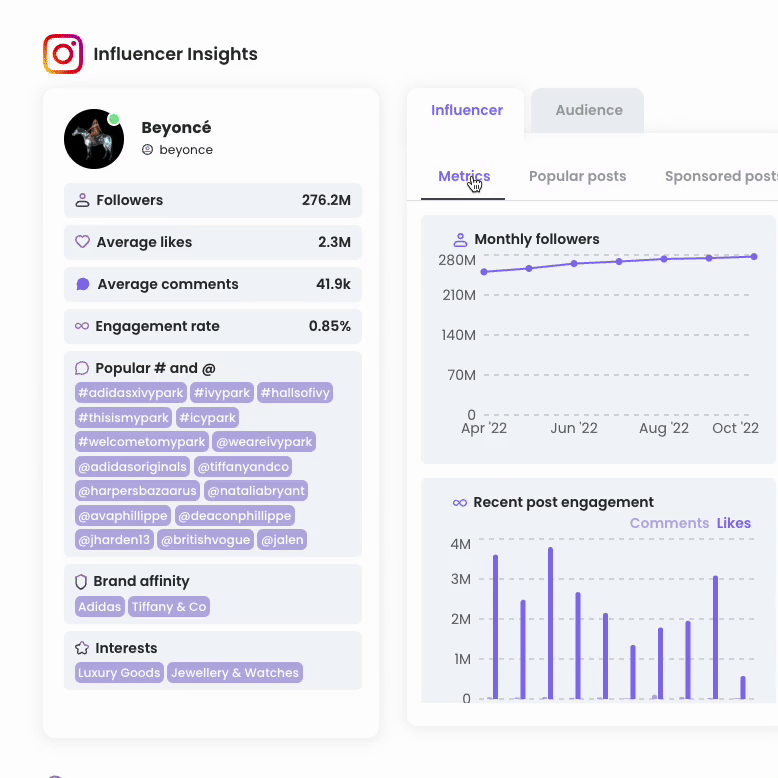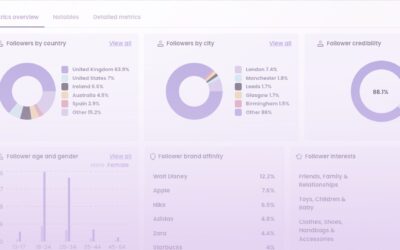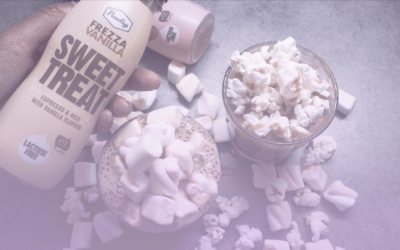The rapid growth in influencer marketing has led to constant changes: what worked a few years ago may no longer work today. One of the strongest trends is one-off collaborations being replaced with long-term influencer partnerships and brand ambassadorship.
There’s a good reason for that: long-term collaborations are more convenient for both parties. They require less time, seem more trustworthy, and bring better results. Here’s why it is so!
1. More touchpoints with potential customers
One of the main reasons for which you should prefer long-term influencer collaborations is that they create more touchpoints with a potential consumer.
A touchpoint could be a post about the brand on Instagram, an advertisement on Facebook, a poster at a bus stop, or a mention in a podcast – the more they get in the customer’s way, the higher the possibility of them actually buying the product or service.
Compared to a few years ago, consumers needed a lot more time to make a decision to purchase something. In 2015, only one or two posts were needed to convince a potential customer to buy something. Now we need approximately 8 touchpoints (depending on the category and price range of the product) before we decide to consume the product or service.
For instance, a brand and an influencer agree on a six-month collaboration where the content creator has to make two feed posts and four Instagram Stories a month – resulting in 36 different touchpoints between the brand and the consumer in half a year. It could seem a lot, but considering the influencer posts many times a week, it’s actually a really small amount of their content.
But why is it particularly useful if the touchpoints reach the consumer through the same influencer?

Eleriin Sild (@eleriinsild) x Stockmann collaboration photo
2. Long-term collaborations are more trustworthy
If an influencer constantly collaborates with different brands, none of them will probably be remembered by their followers. In addition, if they promote one brand at one point and a competing brand at the next, it feels insincere as well as the influencer’s credibility decreases, and in the future, their recommendations may no longer be taken seriously by their followers.
“One of my personal goals: if my followers were asked what my favourite brands or foods were, they would know the answers to both right away,” explains our Head of Campaign Success and an Estonian creator Anni Rahula (@annirahula). “If an influencer shares something on her Instagram just for once, it will be forgotten pretty quickly. If it’s part of her lifestyle, it’s going to stay there forever.”
If an influencer has a long-term collaboration with a brand, they probably use that brand’s products/services daily and share it on their social media more frequently. Firstly, the recommendation from the influencer seems more trustworthy that way, and secondly, the brand will also be remembered by its followers. In conclusion, there’s a larger possibility of the followers deciding to try out the product or service, too.
3. Creative freedom for both parties
An influencer who’s loyal to the brand knows the brand’s values, goals, and the story the brand wants to tell its audience – therefore it’s a lot easier to create content that doesn’t feel like regular advertising to their followers. Besides, they’ll have a better understanding of the vision, style, message, tonality, etc. about what the brand expects.
On the other hand, long-term collaborations support taking risks and trying out different ideas to make the content as diverse as possible. With one-off influencer collaborations, brands often don’t have the guts to try out something new because they can’t be sure about the results. Long-term partnerships give the opportunity to try out new ideas and plan out future collaborations based on what was successful and what wasn’t.
But remember, you should never set the influencer in too tight frames: it is not reasonable to say exactly what the image should be like or what should be written in the caption. The collaboration post seems natural and credible only if it blends in with the influencer’s everyday posts.
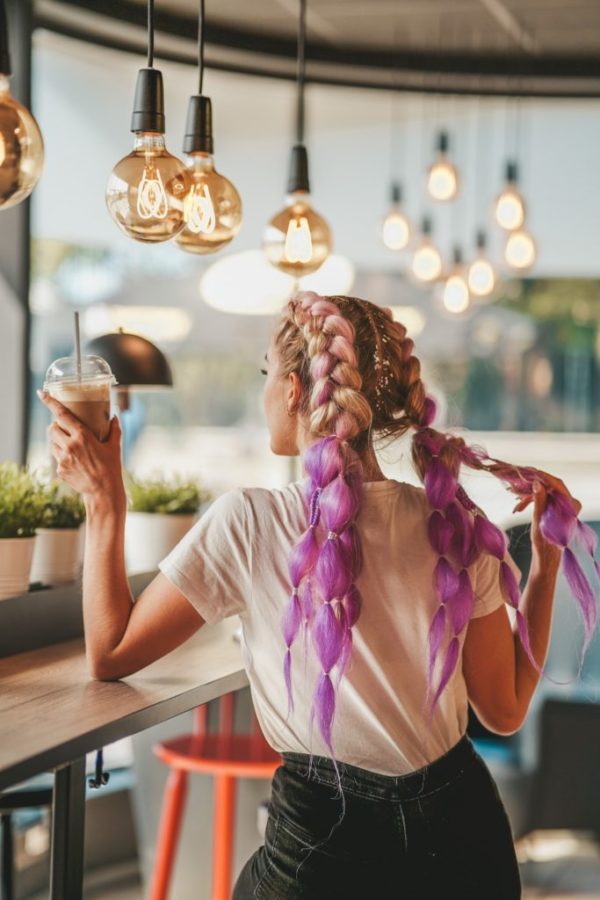
Krista Saadma (@krista_saadma) x Circle K collaboration photo
4. Save time and money
As mentioned before, long-term collaboration partners know the brand’s expectations and goals. Therefore, collaboration is a lot easier and less time-consuming for the brand because they don’t have to constantly look after someone – not to mention the need to constantly look for new influencers and agree on terms with them!
This plays a particularly important role in product campaigns, where the transport of products comes into play. Such collaborations are often organized in such a way that the influencer receives a product for the first post, and if they can continue to use the same product to take photos, they will get paid in money for the subsequent posts. This way, the brand representative does not have to invest time each week in delivering products to new influencers.
5. Influencers prefer long-term collaborations
Agreed content creation schedules (for example, influencer makes 2 posts and 6 stories per month) are also preferred by influencers who can plan their work better. As influencers’ work is often project-based, a long-term collaboration also creates the security of a stable income. This provides the motivation to work harder and create the best possible content for the brand to continue with the collaboration.
Besides, most influencers prefer long-term partnerships with brands they already love – it allows them to be more sincere and honest with their followers, plus do their work with heart, thus bringing better results to themselves and the brand.
How to find creators for long-term influencer partnerships?
The best strategy for finding influencers is to start with a larger campaign, measure the results of each influencer, and on that basis, select influencers to continue working with for the long term.
However, it’s not smart to draw final conclusions based on just one post – as mentioned above, only one touchpoint doesn’t usually lead to sales. Moreover, influencers could also slip: sometimes the visual is not striking enough, or the post does not reach enough followers due to the algorithm of Instagram, etc. Therefore, it is also worth giving a new opportunity to influencers who have brought great results.
After that, continuous measuring and optimization begin, where you can replace the influencers who did not bring enough results and continue working with the influencers who brought remarkable results. Treat your influencer team as a sports team where everyone has to bring out results!
It is definitely a good idea to mention the possibility of a long-term collaboration in the description of the campaign brief: if you immediately point out that the influencers who bring the best results have a chance for a long-term partnership, they are undoubtedly motivated to put in more effort!
Read more:
Your guide to finding influencers on Instagram
Your guide to finding TikTok influencers

Ilja Toome (@iljatoome) x Solaris Centre collaboration photo
In conclusion, while one-off partnerships and campaigns certainly have their place, long-term influencer collaborations are more trustworthy, create more touchpoints with potential customers, and definitely require less time.
How to manage long-term influencer collaborations?
In general, influencer marketing is evolving into relationship marketing. Thus, influencer relationship management is becoming a central part of brands’ social media strategy.
This has given the rise to IRMs – influencer relationship management tools that allow companies to manage all their creators, and collaborations, and monitor branded content in one place.
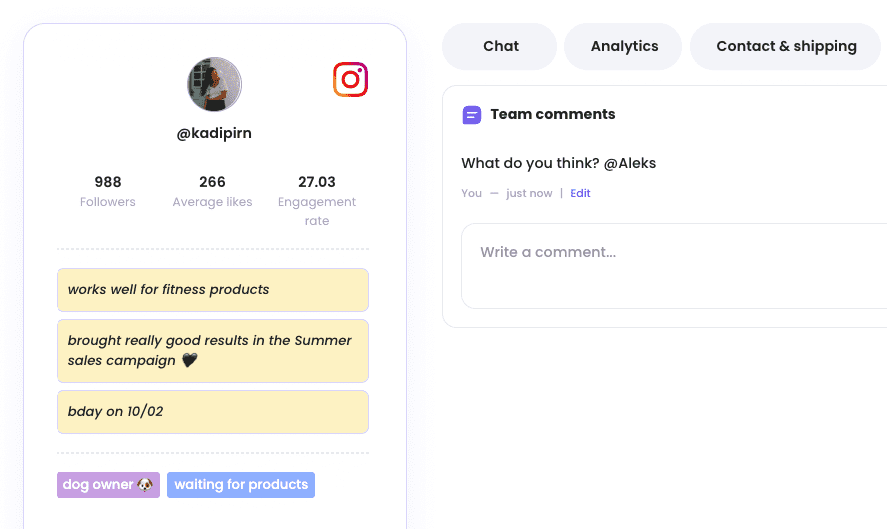
Promoty is one of them: it’s an influencer CRM that allows you to add Instagram, TikTok, and Youtube creators, and organize them by boards and columns.
Every profile can be enriched with notes, labels, and comments – such as “is a vegan” or “difficult to work with”. Additionally, you can use the in-app chat to chat with influencers, and use the ‘team comments’ section to speed up your teamwork.
This way, you could save time on influencer marketing while building strong relationships with them. Here’s a short video on how it works!
